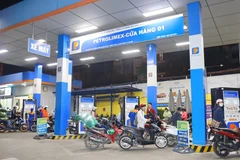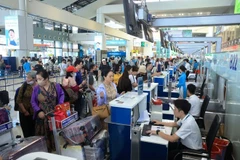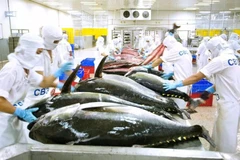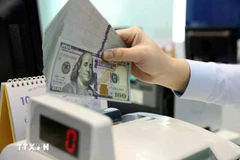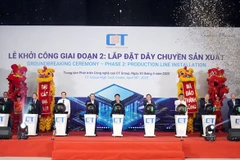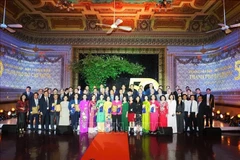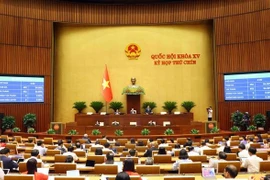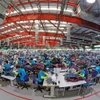The export of timber and wood products, after many years of rapid increases,dropped significantly from the beginning of this year.
Statistics of the Vietnam Timber and Forest Products Association (Viforest)showed that wood exports were estimated at 4.7 billion USD in January – May,falling by nearly 30% against the same period last year.
Viforest President Do Xuan Lap said that wood companies were struggling withexports due to falling demand in major markets, such as the US, Japan, the Republicof Korea, China, the UK and the Europe Union.
Vietnam was facing two trade defence investigations on plywood and kitchencabinets initiated by the US. Lap said that the prolonged investigationsseriously affected Vietnamese plywood companies. The biggest problem was thatAmerican companies were shifting their purchases to other markets.
Nguyen Liem, President of the Binh Duong Furniture Association, said thatenterprises were facing a lot of difficulties and many of them had to cut theiroperating capacity by 60-70%.
“The global economic situation remains unpredictable with rising inflationrisks in major markets, including the US and the EU. All market signals are notvery positive for the wood industry,” Liem said.
VNDirect Securities said that as a recession was on the horizon, it would be adifficult time for the wood industry of Vietnam, which might last until the endof this year.
Viforest said that enterprises were in need of support in trade promotion toexpand markets through the negotiation and signing of free trade agreements.
In addition, industrial zones specialised in wood and forestry productprocessing should be established in localities with high potential such as thenorthern mountainous region, south central coast and southeast region.
Enterprises would also need to improve their capacity to cope with tradedefence lawsuits, the association said.
The focus would be on providing support to develop plantation areas withsustainable forest management certificates to meet the market requirements.
Viforest also called for accelerated efforts to speed up the refund ofvalue-added tax to wood companies which had been delayed due to problemsrelated to the tax authority’s approach to verifying wood origin traceability.
It was estimated that about VNĐ6.1 trillion worth of VAT had not been refundedto wood exporters.
The wood and forest product industry set the goal for export value of 17.5billion USD this year, a slight increase over 2022, which was at 17.1 billionUSD, which could be challenging as global consumption demand declines./.







